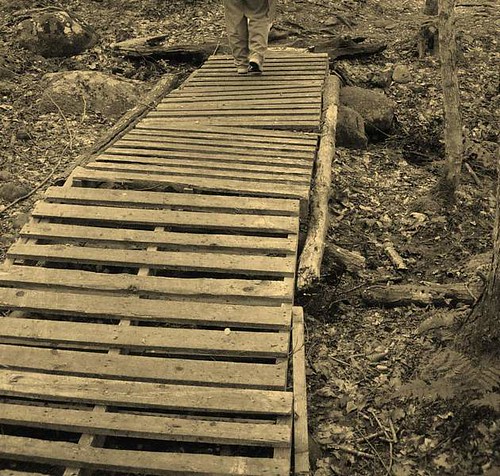
The Paradigm is shifting. One word encompasses the new global paradigm which affects everything and everyone: DIGITAL.
It's about creating and keeping things in a digital format. It's about sharing information digitally. It's about reading and writing digitally. Creating music digitally. Sending invoices digitally. Keeping medical records digitally. Archiving family photos digitally. And, hopefully,TEACHING digitally (as
TeachPaperless and others have been advocating for some time). There are strong environmental reasons to support this since going digital means fewer trees are sacrificed for use as paper which also means fewer chemicals are used to process paper but there are other reasons, too. For some, even those that understand and support 'going digital' it's tough to break from the tactile comfort that 'things' bring. As a bibliophile of sorts I understand this. Books, to me, have an 'aura'. They have a look. They have a feel and yes, even a smell: the sweet, slightly mossy smell of pulp. The cover art also conveys something powerful causing an 'emotional' experience even when a book isn't being read. And one can curl up with a 'good book', a cup of tea (and perhaps a cat or other favorite pet). It's a tactile and somewhat romanticized vision. However, sales of books in digital format (e-books) are on the rise. For one, Amazon's
Kindle E-Book Reader makes it easy (and relatively inexpensive) to download and read a book digitally. So, books are not being spared digital treatment.
The reality, though, is that so much information
beyond books simply doesn't need to be printed out anymore. All information can be converted to PDF files. Portable Document Files were originally created by Adobe Systems in 1993 and were opened up as an open standard in July 2008. This simply means anyone can view, use and create PDF's now. Think of them as Mp3's for text and images. Mp3's can be played on ANY Mp3 player. PDF's can be viewed on any computer regardless of software, hardware or operating system.
BENEFITS of PDF's FOR TEACHERS
If you are a teacher, anything you 'hand out' to a student can be delivered digitally. (See below for how to distribute your PDF documents). One way to create digital documents is to scan a worksheet or lesson and let the scan software create an automatic PDF file of the document. PDF (Portable Document File) files are powerful for a number of reasons. First, they are relatively small in size so they take up little hard drive space. Example: a 500 page PDF file of jazz standards I own takes up only 18MB of hard drive space. To understand how small this really is nowadays, Google's e-mail program Gmail allows users to e-mail an attachment up to 20 MB. This means, I can e-mail you a 500 page document right now. Not only you but all 12 (or 1000) of you that might happen to read this blog post. Second, PDF files can not be edited by others (well, they can be, but not easily). That's the main idea behind PDF's . What you want people (students, parents, staff) to see is what they see. Think of it as a 'picture' of your document.
VIEWING PDF files
How do you view PDF files? Adobe Reader is probably the most popular way to view PDF files and most computers have it installed but I prefer
Foxit Reader.

It's free and less bulky than Adobe Reader. I encourage anyone to download and use it instead of Adobe but, in the end, it doesn't really matter which program you use.
HOW TO CREATE A PDF file
If you type up a document, worksheet or handout and want to turn it into a PDF file there are several ways to do this. I will highlight two methods:
1-Get a -Gmail account and begin using Google Docs instead of MS Word or some other 'stand alone' word processing program. Once you create then save a document in Google Docs, you can download it as a PDF file. All of this is done free of charge simply by creating a
Gmail account. The benefit is that all of your work lives "online". This is what is referred to as "cloud computing". You can access your documents from anywhere at anytime. It de-emphasizes the power of PLACE (a future blog post). At any rate, the PDF file you create can now be 'delivered' to the audience of your choosing. It can be posted at a website so students can download it or it can be
e-mailed directly as well.
2-If you prefer to use the word processing (ie. MS Word) program that resides on your hard drive, you can still create a PDF file for free. The concept to understand at the outset is that you will "print" the document as a PDF. But first, download the free program called
PDF CREATOR. Once installed, just choose PDF Creator as your "printer" when you choose to print. Voila! You just created a PDF file which you can distribute to anyone, anytime, anywhere.
When we get right down to it, we buy books for the information contained in the books even if the covers are attractive. At school we don't put fancy covers on our handouts (though we may jazz them up with "fun" fonts and clip art), we simply create them and hand them out because it's about the INFORMATION contained in them. That's what digitization does: it cuts to the chase. It gets to the heart of the matter-the essence, the message, the objective, the point. Welcome to the digital world. What will you digitize today?


















